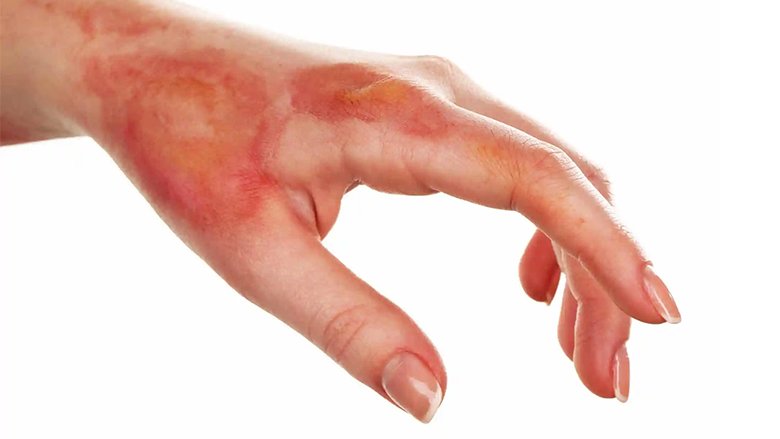
Skin burns are among the medical ailments that exosome therapy, a new field in regenerative medicine, shows promise in addressing. Small vesicles called exosomes are released by cells and contain genetic material, lipids, and proteins. They can affect cellular behavior and tissue healing and are essential for cell-to-cell communication.
Advantages of Exosome Treatment
Exosome treatment has a number of possible benefits when treating skin burns, including:
Potential for Regeneration: Packed with growth hormones, cytokines, and nucleic acids, exosomes can promote tissue regeneration, cell differentiation, and proliferation. This ability to regenerate is essential for encouraging the repair of injured skin.
Effects on Inflammation: Exosomes have the ability to reduce inflammation, which may help control the inflammatory reaction at the burn site. Exosomes may lessen tissue damage and foster a better healing environment by lowering inflammation.
Immunomodulatory Properties: Exosomes have the ability to affect immune cell activity, which aids in controlling the body’s reaction to burn damage. This immune function regulation may lessen consequences linked to immunological malfunction or excessive inflammation, as well as promote a more balanced healing process.
Non-immunogenic: Autologous exosomes, which are produced from the patient’s own cells, are not expected to elicit an immunological response or be rejected when given. Because of this, exosome therapy is a secure choice for individualized care that carries no danger of issues relating to the immune system.
Targeted Delivery: Therapeutic cargo can be precisely delivered to the site of harm by using exosomes that have been created or modified to target particular cell types or regions. By minimizing off-target effects, this tailored strategy maximizes therapy efficacy.
Minimal Risk of Tumorigenicity: Exosome treatment has a minimal risk of tumorigenicity, or unchecked cell growth, in contrast to some cell-based therapies. For therapeutic applications, this safety profile is helpful, particularly when treating skin burns where it’s critical to reduce possible dangers.
Administration Ease: Exosome therapy is often applied topically or by injection of solutions containing exosomes; this is a reasonably non-invasive procedure that may be seamlessly included in the current therapeutic procedures for the treatment of burns. Patient compliance and convenience are improved by this administration’s simplicity.
Mode of Action in Skin Burn
Exosome treatment works to heal skin burns in a number of important ways.
- Cellular Communication: Intercellular communication is facilitated by the presence of proteins, lipids, and nucleic acids in exosomes, among other bioactive substances. Exosomes that have been applied to the burn site engage in surface receptor-mediated interactions with adjacent skin cells, including keratinocytes, fibroblasts, and immune cells, or they transfer their cargo directly into the target cells.
- Inducing Cell Proliferation and Differentiation: Growth factors, cytokines, and other signaling molecules are transported by exosomes, and these substances have the ability to induce skin cells involved in wound healing to proliferate and differentiate. To help with re-epithelialization—the process by which new epithelial cells migrate and cover the wound surface—they may, for instance, encourage the proliferation of keratinocytes.
- Immunomodulation: Exosomes have the ability to control immune cell activity that is involved in both the healing of wounds and the inflammatory response. In order to create a more balanced and under-control immune response, they may encourage the formation of anti-inflammatory immune cells (like regulatory T cells) while inhibiting the activity of pro-inflammatory immune cells (like neutrophils and macrophages).
- Oxidative Stress Reduction: Antioxidants and other compounds found in exosomes have the ability to neutralize reactive oxygen species (ROS) and lessen oxidative stress, which is frequently increased in burn injuries. Exosomes contribute to the development of a more conducive wound-healing environment by reducing oxidative damage to cells and tissues.
Indicators For Skin Burn Treatment With Exosome Therapy
The following are signs that exosome therapy should be investigated as a skin burn treatment option:
Burn Injury Severity: In cases of moderate to severe burns, such as second-degree and deep partial-thickness burns, when conventional treatment modalities may not be able to maximize healing and reduce scarring, exosome therapy may be very helpful.
Delayed Healing or Non-healing Wounds: Adjunctive exosome treatment may be beneficial for patients whose burns do not heal or heal slowly despite standard wound care therapies. This will hasten the healing process and enhance results.
Risk of Problems: Exosome therapy may be helpful for burn patients who are susceptible to problems including infection, hypertrophic scarring, or contractures. This treatment can speed up the healing process and lower the chance of unfavorable results.
Chronic or Recurrent Wounds: Patients who experience recurring or chronic wounds, such as burn scars that may not heal or remodel properly over time, may find that exosome treatment helps to promote more thorough wound closure by promoting tissue regeneration.
Availability of Autologous Exosomes: Exosome therapy may provide a customized therapeutic strategy with a low risk of immunological rejection or unfavorable responses in situations when autologous exosomes made from the patient’s own cells are accessible.
Failed Conventional therapies: As an alternate or complementary therapy, exosome therapy may be appropriate for patients who have not responded appropriately to traditional burn wound care therapies, such as topical ointments, dressings, or surgical procedures.
Patient Aspects and Preferences: When assessing whether exosome therapy is appropriate for treating skin burns, consideration should also be given to patient aspects such as age, general health condition, comorbidities, and treatment preferences.
Skin Burns Procedure
Exosomes are extracted from human mesenchymal stem cells and then meticulously inspected for quantity and quality. We will employ our exosome bank, which contains essential lipids, messenger RNA, cytokines, and proteins, as advised by the specialist.
With specialized laboratories that have all the equipment needed to carry out any Exosome therapy successfully, Stem Cell Care India in Delhi is among the best healthcare consultants equipped to help patients get the desired results. Great effort is taken to ensure that every product passes a rigorous screening procedure attesting to its sterility, user safety, and endotoxin testing before starting any therapy.

